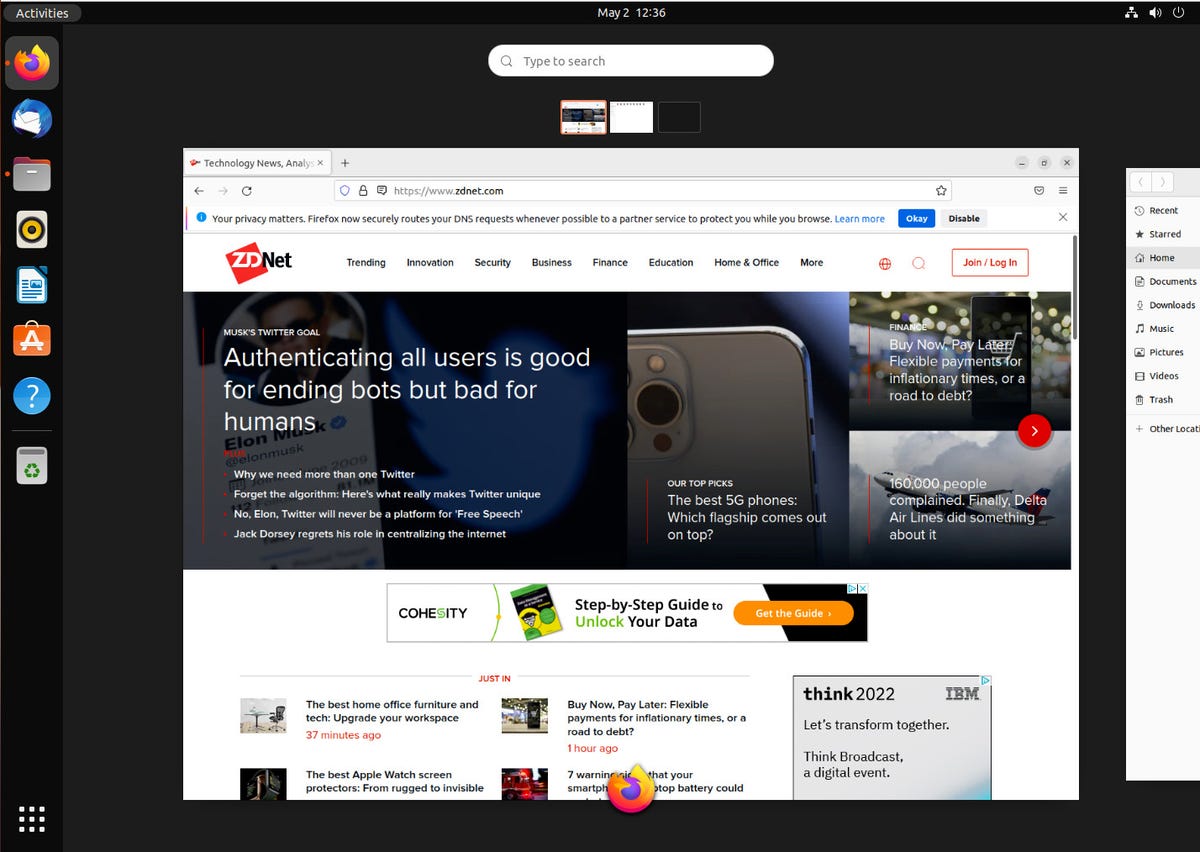Although Ubuntu Desktop hasn’t been my go-to operating system for some time (that honor goes to System76’s Pop!_OS), it was for a very long time. To this day I have the utmost respect for what Canonical is doing and has done for Linux on the desktop.
One thing, however, that did tend to put me off was how slow Ubuntu was to update installed applications. For the longest time, Ubuntu lagged behind so many other distributions with the release versions used for certain applications. Inevitably, I’d had to manually install the latest releases of apps like LibreOffice to get the most recent versions.
Also: How to install Ubuntu Linux (It’s easy!)
More to the point, one issue was that every 6 months it was time for a new upgrade. And although Ubuntu is one of the most reliable operating systems for upgrades (I’ve rarely had an Ubuntu upgrade go south), it’s nevertheless a time-consuming process that can put a damper on your productivity during the process. And even though it only happened twice a year, if you wanted to stay on top of updates, it was a necessary evil.
That’s one of the reasons why rolling release distributions exist. A rolling release Linux distribution receives continuous package updates, so there’s no major update (for instance, you don’t go from 21.10 to 22.04). A rolling release distribution ensures you always have the latest version of installed software as soon as it’s made available. That is not to say you’re using bleeding edge, beta applications on your desktop. Rolling release distributions do leverage stable software, so you don’t have to worry that you’re going to lose precious work due to unstable, beta software.
Now that you have at least a cursory understanding of what a rolling release is, let me introduce you to a distribution that turns Ubuntu Desktop into a rolling release. That distribution is called Rolling Rhino and the developers have taken great pains to create a solid, dependable user desktop that adheres to the rolling release philosophy, by way of the user-friendly Ubuntu Desktop.
Before we continue, I should offer up this caution: I wouldn’t recommend a rolling release distribution to those who are brand new to Linux even though most rolling release distributions are very much stable enough for everyday usage. One of the reasons for this is that Rolling Rhino depends on two particular commands to keep it upgraded:
Unlike the traditional Ubuntu desktop (which offers outstanding GUI tools for the upgrade), users of Rolling Rhino will need to depend on the command line to make sure their systems are up to date. That’s not to say a new user can’t open a terminal and type either one of those commands but users new to Linux would be better off sticking to GUI tools until they reach a certain level of comfort with the operating system. Even then, most users of Ubuntu Desktop could go their entire existence with Linux and never type a single command.
With Rolling Rhino, you’ll need to open that terminal window now and then.
Another interesting feature found in Rolling Rhino is the Arch User Repository (AUR)-like package manager, Pacstall. The developers worked with the Pacstall developers to make it possible to integrate this tool into Rolling Rhino. Although this isn’t something users will actually interact with, it works under the hood to bring the experience of AUR to Ubuntu.
What is Rolling Rhino like?
To be perfectly honest, unless you really knew what you were looking for, you’d think Rolling Rhino was just another (slight) variation on Ubuntu Desktop. The installation is the same, and the desktop (minus a bit of branding) is the same (Figure 1).
Figure 1

The Rolling Rhino desktop should look instantly familiar to anyone who’s used Ubuntu.
Instead of going with a pure GNOME desktop, Rolling Rhino sticks with the same layout found in Ubuntu. So, you’ll find a side panel along with the Application and Activities overviews. And since it’s based on GNOME 42, you get the highly productive horizontal workflow (Figure 2).
Figure 2

The GNOME 42 horizontal workflow makes it easier to move applications to different workspaces.
In fact, other than the rolling release nature of Rolling Rhino, it very much looks and feels like a traditional Ubuntu desktop. For anyone who’s experienced GNOME 42 (and Ubuntu’s take on that desktop), you understand how productive that is. Rolling Rhino is an elegant desktop that is reliable, powerful, flexible, and doesn’t demand you migrate from release to release as they are made available.
Given how similar Rolling Rhino is to Ubuntu, why bother? In a word, convenience. If you find yourself avoiding the migration from release to release, but still want the latest-greatest software installed on your Ubuntu desktop, Rolling Rhino is a great option. And considering this Linux distribution gives you the best of both worlds, it’s a serious win-win for so many users.
You can download a copy of Rolling Rhino here now and install it on either bare metal or as a virtual machine and see if this might be your next Linux distribution of choice.
Stay connected with us on social media platform for instant update click here to join our Twitter, & Facebook
We are now on Telegram. Click here to join our channel (@TechiUpdate) and stay updated with the latest Technology headlines.
For all the latest Technology News Click Here
For the latest news and updates, follow us on Google News.


